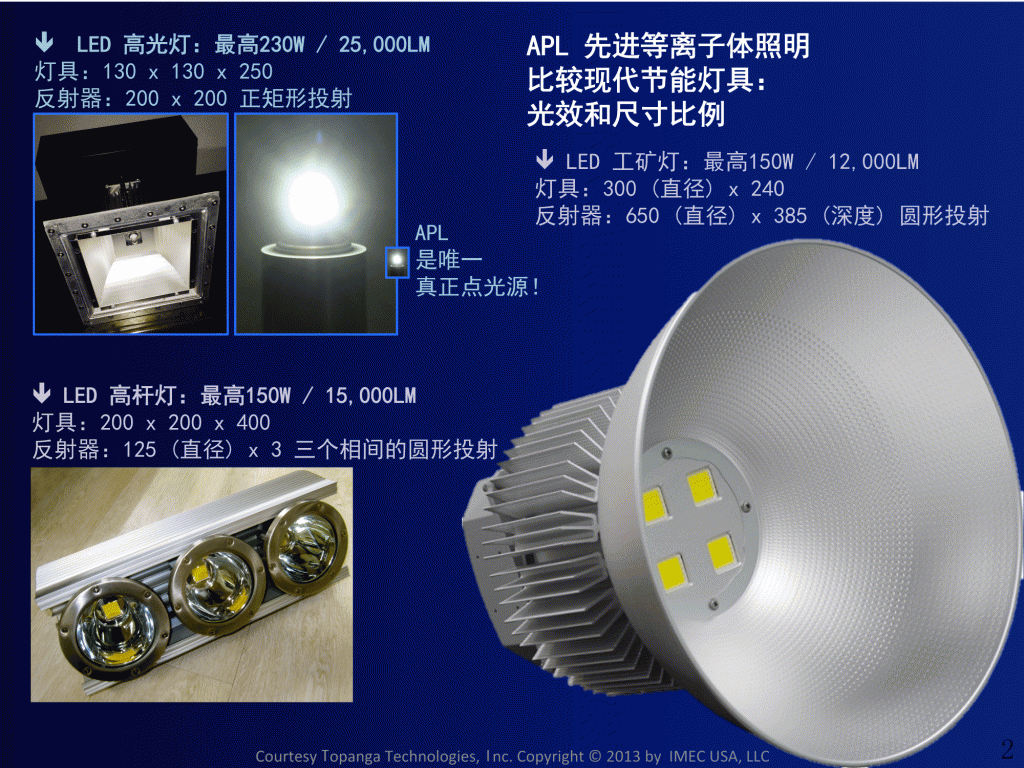èžèµ„产业化“先进ç‰ç¦»å体照明â€ã€‚
Point light generating up to 100,000LM high-intensity light with 130+ LM/W conversion efficiency. APL so far among all electric lights is the most close to sunlight natural spectrum, direct parallel floodlight, no glare, safe and healthy to daily users. The point light source is ideal for straight forward and optimal optical designs to achieve well controlled lighting; as well point light can perform well following sophisticated for special  applications.
Manufacture of APL is retrofit to conventional process technologies, does not involve expensive materials and their sophisticated processes; does not consume extensive power or natural resources; process has no emission or exhaust, does not needed extra efforts and facility for environmental treatment. APL light bulb contains the least heavy metal or compounds comparing to other light devices, which increasingly became a issue in safe disposal and recycle.
APL, comparing to conventional plasma lighting, achieves better controlled plasma lighting without involving quartz, ceramic, or semiconductor alloy to make its high-power resonator, and no moving parts. Thus it is the simplest in manufacture. Proprietary computer-aided tuning process on assembly line assures optimal operation of each individual light engine.
IMEC USA, LLC is consulting China capital and industrial developers to invest APL. We  completed due diligence with the founder steam, and had a good valuation toward Topanga Technologies’ Series D investment. This round of plan is to push the certified products into pilot production, so that it Topanga can market and populate large-scale applications in North America and China. In the meantime continuing R&D will grow the product families into various APL-enabling applications. APL takes advantages in high-intensity, point-source, energy-saving and low manufacture costs. It out performs conventional HID, HPS and LED lights at multiple levels. Also important, due to its close-to-natural spectrum, APL has a potential as the ultimate energy-saving lighting solution that also well address human safety and health. In that department it is increasingly becoming a public concern, regarding bed light spectrum, glaring and low-efficiency light projection of new types of energy-saving light sources.
